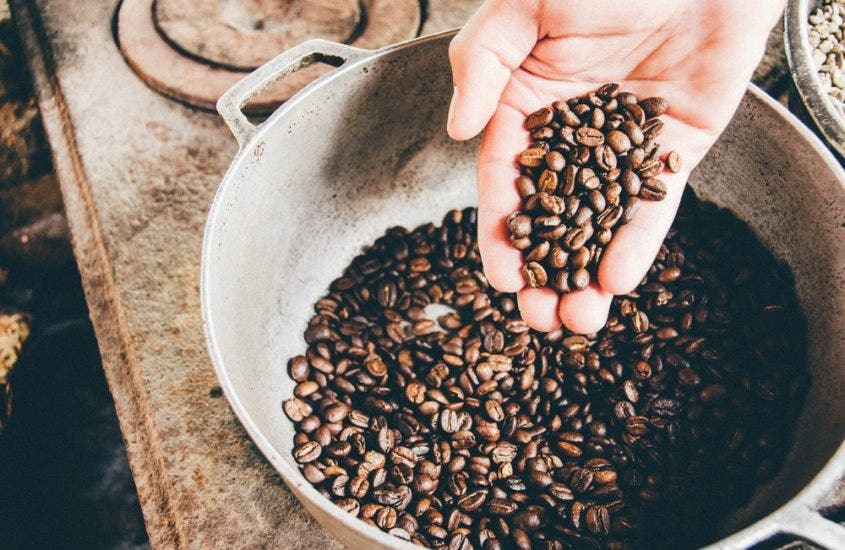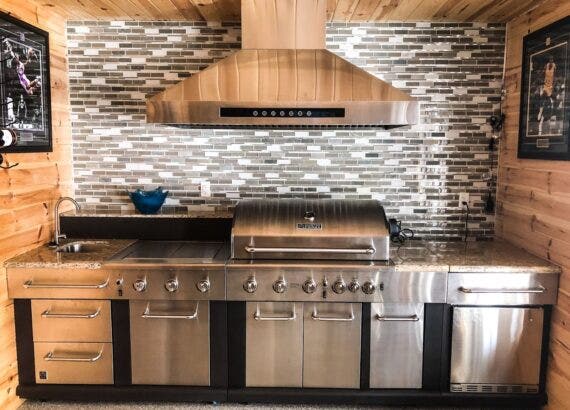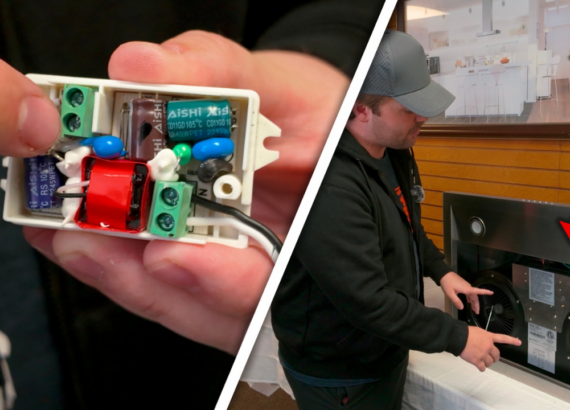How To Roast Coffee Beans At Home

Have you been struggling to find a great cup of coffee? Are you wasting more and more money trying coffee all over town in search of the perfect coffee shop? Has your coffee quest been full of distracted baristas who bring you burnt or old coffee?
If you’ve ever wanted to roast your own coffee beans or create your own unique flavors, now is the time! Coffee is the quintessential morning drink for many people. I know I love a good cup with my breakfast! Buying your own coffee beans and grinding them yourself will help build that coffee flavor you love.
But now, let’s take that one step further, as coffee connoisseurs always do. Let’s dive into a step-by-step guide on how to roast coffee beans at home. Grab your coffee and enjoy the read!
Table of Contents
Why Roast Your Own Coffee Beans?
The reasons are pretty simple here. For starters, it’s far more fiscally responsible for you to buy your own green coffee beans. They are usually less expensive than roasted coffee beans.
Some types of roasted coffee beans can be as much as $20 per pound, but raw green coffee beans can be as little as $5 per pound. Not only that, but you can also create your own flavor profile.
Since you bought your own, you can combine ingredients together and create the best coffee profiles and aromas that you love.
One common misconception is that light roasts have more caffeine than dark roasts. The caffeine levels are actually pretty similar. Lighter roasts generally are more acidic. Medium roasts have less acidity and a better flavor profile, while dark roasts have the richest flavor profile.
Roasting coffee beans involves a chemical reaction called the Maillard reaction. This occurs between amino acids and reducing sugars under high heat, which browns the beans. This brings about new aromas and flavors in the beans. The same thing happens when cooking a steak or browning butter for a cake.
How To Roast Your Coffee Beans
Roasting coffee beans requires your utmost care and attention. But the good thing is, the process is similar for all the methods we will list below. One thing to keep in mind is that not all beans are the same because they are grown in different countries.
The roasting methods will vary based on temperature. Also, your personal preferences will vary. So, it’s best to experiment; and remember, don’t quit after burning a batch. We all start somewhere!
You may not want to start off with a large batch of raw coffee beans on the first attempt, either. You won’t be making all that coffee in the next couple of days. You can start as small as a quarter cup if you want – or with larger quantities.
Remember to stir your coffee beans around to prevent burning. Don’t make too many at once.
Step 1: Choosing the Right Bean
This is where you will have to do some research! Either look up what beans are popular in your area or go to local coffee shops and ask about what types of beans they use. You’ll be able to learn about where your favorite beans come from and the best places to buy them.
Step 2: Heat It Up!
If you’re using a roasting machine or popcorn popper, turn it on and set it to the right temperature. Ovens, pans, and stoves should be around 450°F – 500°F to roast coffee beans.
Yes, it does need to be this hot. The extreme temperatures will cause the beans to create their own oil. So, no need for extra oil.
Step 3: Determine Your Roast
There are generally three types of coffee bean roasts: light roast, medium roast, and dark roast. Light roasts will take about 4-6 minutes, medium roasts will take about 5-8 minutes, and dark roasts will take 8-9 minutes.
Make sure if you’re doing a dark roast, you pay attention as the ticker gets to eight minutes – they can easily burn at this stage!
Step 4: Add Your Coffee Beans
Add your coffee beans to the roasting device you chose. For machines and popcorn poppers, do at the most a half cup; start smaller if in doubt! You can always do more later. For pans, spread a thin layer on the pan to make sure even roasting is possible.
Step 5: Start Your Roast and Stir Your Beans
If you’re using a popcorn popper or coffee roasting machine with an automatic agitator, turn on your machine and record the time.
If you’re using a manual crank or stirring them on the stovetop or in an oven, make sure to constantly stir! Oven times may be longer since you will be taking them in and out of the oven – stir every 30 seconds.
Step 6: Listen For the Cracks
Make sure to listen for the first crack. The audible “crack” sound is an indicator of the first roasting stage, which yields a lighter roast. The second crack will occur around the seven-minute stage and is a good indicator for medium roasts. For a dark roast, leave the roaster on no longer than a minute and 30 seconds.
Note: It is harder to hear the cracks if you are using an oven.
Step 7: Place Beans in a Ceramic Container
Now that you’ve finished your coffee beans, transfer them into a stainless steel or ceramic container. Plastic is not suitable. It will often melt because of the high temperatures of the coffee beans. An opaque glass container works well.
Once they have cooled for a couple of minutes, use two colanders (or one and another container) and toss the beans gently between the two. This helps get off the protective chaff, or “skin” that green coffee beans have on them come off. If this isn’t removed, the coffee may taste a little bitter.
Step 8: After Cooling
After cooling the beans, allow them to sit out for about 12 hours to de-gas. Carbon dioxide will build up and you need to remove it before storing the beans. A container with a degassing valve that lets carbon dioxide out is the best method.
But if you don’t have this, leave them in a bag or container on the counter for 12 hours and immediately store them in an airtight container. Overnight works best!
Types of Roasting Methods
There are many ways to roast coffee beans, but one staple remains throughout the process. You’ve got to constantly stir the coffee beans, so some of the roasting methods can be more time consuming than others.
The best machine to use is obviously a coffee roasting machine, but most of us don’t have one of those lying around! There’s always the option to buy one if you decide that roasting your own beans is something you want to keep up.
They do run rather expensive sometimes, so you will need to make sure this is a solid investment that you will use consistently. But, for those of us that don’t have this option, let’s dive into the other methods.
Keep in mind that coffee beans will get hot and smoky during the roasting process, so make sure to have a well-ventilated kitchen.
Cast Iron Pan on Stovetop or Grill
One of the more popular options for new roasters, this method only requires a cast iron pan on your stove or grill. Why? Well, cast iron retains heat well, better than almost all other methods listed that aren’t coffee roasting machines.
If you have a grill with constant heat, this is the best option; a stovetop will work well. If doing this method on a stovetop, make sure you have your range hood on, as this process will get smoky and hot!
Hot Air Popcorn Popper
One of the best portable alternatives to a coffee roasting machine, this method is perhaps most common for first-time roasters. If you have a deck or patio with an outlet, this will ensure you can keep the heat and smoke out of your kitchen while roasting your coffee beans.
But, be careful. Most popcorn poppers have warranties that will be voided if it’s used for anything other than popcorn. They don’t last too long, so buy a cheap one to start.
Cookie Sheet or Pan In The Oven
This method is a good alternative to a cast iron pan on your stove top, but it requires lots of stirring. There also may be heavy smoke involved too! It’s one of the more difficult methods since it’s hard to keep an eye on the beans, but it could work in a pinch once or twice.
Manual Popcorn Popper on Stove Top
This is a good alternative to a hot air popcorn popper, and will generally last long as well since they are made of metal. You will have to manually crank the agitator which can be tiresome, so grab a friend and tag team if you’re doing dark roast!
Upgrade your kitchen with a professional range hood!
With all that roasting you’re doing, steam and the strong odor of coffee fills your kitchen in no time. To get rid of the pesky steam and odors, invest in a professional range hood. Browse some of our best deals from Proline Range Hoods below.
You’re Almost Ready For Coffee!
When you roast coffee beans at home, it will taste best if you grind them within the next two to three days. Sometimes you’ll want to wait longer, and sometimes shorter, depending on the type of roast. So grab a burr grinder and grind those beans to the grain of your choice.
If you don’t have a burr grinder in your home, consider purchasing one, or, read our blog on how to grind coffee beans without a burr grinder! We include many different and creative methods in this article, and it’s perfect for first-timers.
With this in mind, we figured we would delve into the different roasts and explain those a little bit better. There are three types of roasts, although some may argue there are around five. The three traditional roasts are light roast, medium roast, and dark roast. Sometimes, you can have a light-medium roast and medium-dark roast. But this is more for large corporations who roast large batches of beans at the same time.
Light Roast
Some people like a lighter roast which is traditionally called a “breakfast roast” or “breakfast blend.” Light roast is commonly thought to have more caffeine than medium or darker roasts. This isn’t actually true. There are very minimal differences between roasts and caffeine amounts.
So, what makes a light roast a light roast? It refers to the roasting time, and will often be lighter in color. Because of this, it’ll keep more of the green coffee flavor. This makes light roast more fruity and sweet to the tongue than darker roasts.
Medium Roast
This roast is for the indecisive coffee drinkers who want a bit of both light and dark roast! You’ll have a bitter aftertaste which is common in dark roasts, but it won’t be intense.
If you like well-balanced flavors and strong aromas, medium roast is for you! This is the most common type of coffee in the United States, so much so that it’s often referred to as American coffee!
Dark Roast
Dark roast is of course the darkest and roasted the longest of the bunch, giving the beans a more oily and dark brown color. You will have little to no taste of the green coffee bean remaining as it will carry a much bolder, and usually more bitter, taste to the body.
You may be able to pick up hints of chocolate, dependent on the type of coffee bean you get! In this case, they may taste more bittersweet.
More common in European countries like France, Spain, and Italy, these beans secrete more oil which gives the coffee a smoother texture. Dark roasted coffee will have a bittersweet, earthy taste. Personally, this is my favorite type of coffee! I love a good, bold, dark roast coffee without sugar. It’s how I judge my coffee!
Now, To Master Coffee Roasting!
Hopefully, your first roast went well. It’s pretty common to fail at your first roast and burn some beans if you leave them in too long. But, don’t give up. Once you’ve practiced a few times, you should be in good standing to continue on.
If you want to roast coffee beans at home often, consider investing in a coffee roasting machine! Then, build your very own coffee bar or coffee island. We have an article that details some of the best and most creative pieces to include in your coffee bar; find that post right here!
But if you’re more of a “couple cups of coffee a week” kind of person, you may need to have the right storage for your coffee beans. They will generally last a long time in their bag. Here are some alternative methods on how to store coffee beans, including how to use old beans!
Have fun roasting coffee!








Comments are closed.